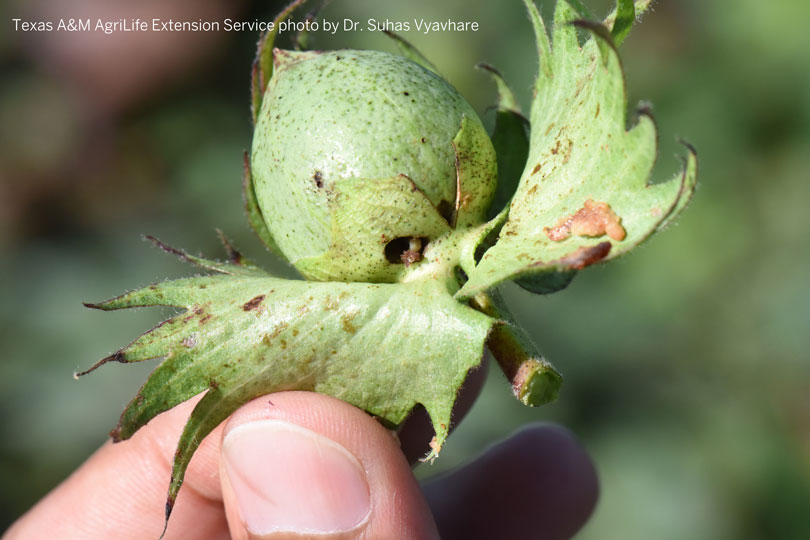By Jessica Domel
Multimedia Reporter
As corn, cotton and grain sorghum continue to mature across the southern parts of the state, agronomists urge farmers to watch for pests like sugarcane aphids, bollworms and thrips.
“In the Rio Grande Valley, things are moving along pretty good. All the irrigated crops down there look very good. For dry land, it’s been pretty tough. I know they’ve had some difficulties. They missed out on rain—especially for the cotton crop down there,” Scott Stanislav, technical agronomist for Asgrow, Deltapine and DeKalb, said in an interview with the Texas Farm Bureau (TFB) Radio Network. “As you move up the coast, things are progressing along fairly well. You get around the Victoria area and corn is starting to tassel there. Obviously, as you move up the coast, it’s a little bit further behind.”
When corn is tasseling, farmers should consider whether or not to apply nitrogen, according to Stanislav.
“It’s been shown that an application at around that tassel stage can provide some yield benefit,” Stanislav said. “Another thing to watch out for at that stage would be whether or not you’re going to decide to use a fungicide. One thing to always remember would be a fungicide is a preventative. It’s not a curative. So, if you end up scouting corn fields and they happen to have disease in them, putting a fungicide at that point may slow it down, but it’s not going to cure it.”
The cotton crop is also progressing fairly well.
“There’s been some pretty tough conditions up through the Coastal Bend in the upper Gulf Coast this year in regard to stand establishment,” Stanislav said. “There has been some weather-related issues and so on.”
In the Coastal Bend especially, farmers have to decide whether or not they want to replant fields with questionable stands that have been hurt by the weather.
“Some things to look out for would be insects—mainly thrips and cotton aphids,” Stanislav said. “On some of these stands that have been hurt by the weather that are being kept, (you) want to watch out for those. Keep those pests out of the fields if you can, and give that crop some time to grow off.”
It’s still too early to tell what the bollworm pressure will look like this year.
Farmers should also be on the lookout for cotton flea hoppers.
“The data shows that when you’re scouting, if you’re finding 15 to 25 cotton flea hoppers per 100 terminals checked, you may need to trigger an insecticide application. In the Coastal Bend and Upper Gulf Coast, thrips, as well as aphids, are something that folks need to be looking for in their fields at this point,” Stanislav said.
Grain sorghum is starting to head out in the Rio Grande Valley and in some parts of the Coastal Bend.
“The sugarcane aphid pressure in the Rio Grande Valley has been fairly light up to this point. For fields that are starting to head out and fields that have maybe just been irrigated, be sure and scout those fields for sugarcane aphid,” Stanislav said. “At this point, the reports coming from the Rio Grande Valley though have shown that the populations up to this point have been fairly light.”
Weeds in some part of the state are a problem already this year.
Stanislav notes no matter what farmers use to control them, be sure to read and follow label directions.
“Always read the label and target weeds at the proper weed size to get good efficacy of those weeds, as well as stewardship of those products,” Stanislav said. “Another piece of weed resistance management would be think about using residuals as well, and put that into the system to help with the weed resistance management.”
Corn, sorghum and cotton are well on their way in Central and North Texas.
Corn planting is underway in the Low Plains.


Scott Stanislav is the best. Great insight from him in this article.